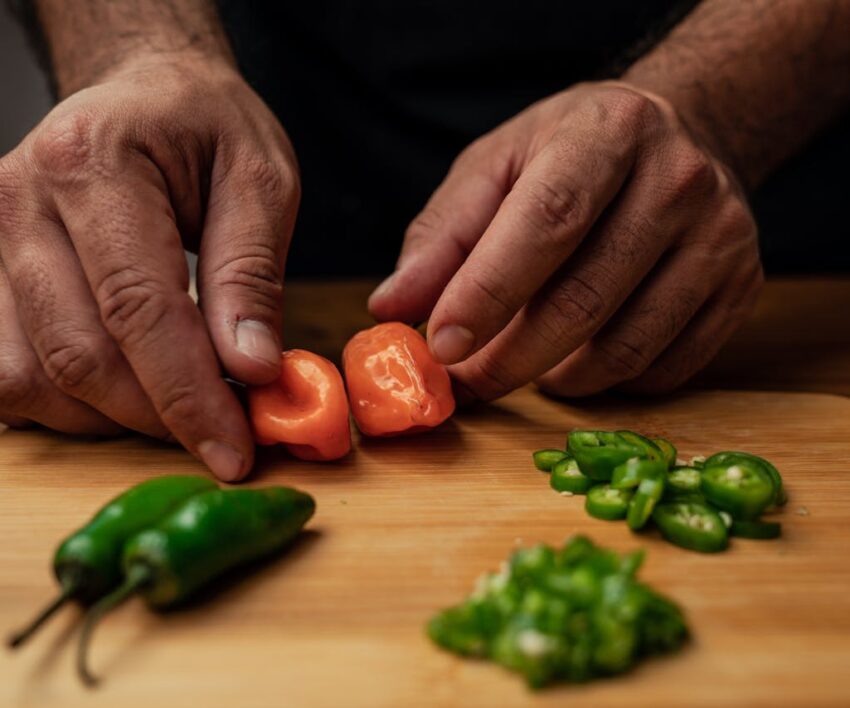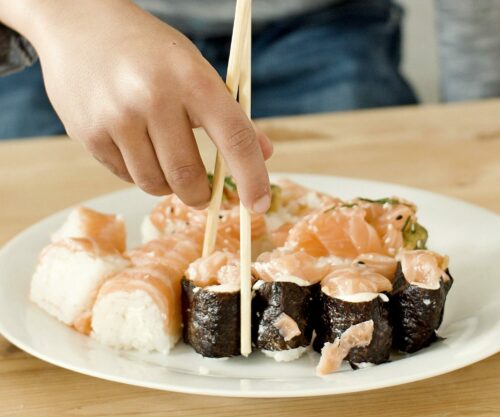
Chillies burn your tongue and take their revenge the next day, yet people love them. Why, asks Lorraine Kearney.
Few foods have the status of chillies. They’re loved and feared in equal measure; they can enhance savoury and sweet; they are grown practically everywhere, and are found in traditional foods around the world; unpleasant at first blush, they are embraced everywhere.
Interestingly, chilli doesn’t have the addictive qualities of other initially horrible crops like coffee and tobacco, and there is no long-term danger in eating them. So why do we eat them? In 1980, researchers Paul Rozin and Deborah Schiller proposed that eating chillies is an adrenaline rush without danger. A bit like a risk-free roller coaster ride.
It’s the theory of benign masochism, which refers to enjoying initially negative experiences that the body falsely interprets as threatening. When you realise there is no real danger, it becomes pleasurable in a sort of ‘mind over body’ way. You feel like you’ve mastered them.
Same for those folk who fancy horror movies.
It Began in America Chillies started their world domination in Central and South America. As with many things, they were spread from there to all corners of the world by explorers and colonists: first Columbus and then the Portuguese.
Japanese shishito peppers, bird’s-eye peppers, bonnet peppers, cayenne peppers and bell peppers are from different culinary traditions, yet they are all in the Capsicum genus and have their roots in Central and South America. They vary in heat, though, going from pleasantly warming to diabolic in one bite. So how to tell if you’re going to delight your dinner guests or be calling for an ambulance?
Enter the Scoville Scale. It’s a measurement of the pungency (the spiciness or heat) of chilli peppers and other substances, such as ginger, black pepper and mustard, recorded in Scoville heat units (SHU). American Pharmacist Wilbur Scoville came up with the idea in 1912. It’s based on the concentration of capsaicinoids, with capsaicin being the predominant component.
View this post on Instagram
There are about 4 000 varieties of chilli, and at the bottom of the Scoville Scale, coming in with zero SHU, are bell peppers, which have no capsaicin at all. And the winner, with a skin-scalding 2.69 million SHU, is Pepper X. That’s very hot. It was bred by Ed Currie, the same guy who brought us the second hottest, the Carolina Reaper, which can clock in at a not-too-shabby 2.2 million SHU (it averages 1.64 million SHU).
Pepper X won the Guinness World Record hottest chilli pepper last year.
Between zero and nearly 3 million are mild peppers, such as the poblano at 1 000 to 1 500 SHU; middling peppers, such as the jalapeño at 2 000 to 10 000 SHU; hot peppers, such as the Thai pepper at 50 000 to 100 000 SHU; and extra-hot peppers, such as the ghost pepper at 855 000 to 1 041 427 SHU.
It took Currie more than 10 years of cultivation to get to Pepper X. Nevertheless, you can’t buy a Pepper X because it’s patented. The only way to get your hands on them is to buy Currie’s sauces.
The Science of It
To design his scale, Scoville mixed an alcohol-based extract of capsaicin oil from a pepper into a solution of sugar water and put the solution on the tongues of taste testers. Little by little, he diluted the solution with more water until it no longer tasted hot. He gave a number rating to that pepper based on how many times he had to dilute the solution to eliminate the heat. Today of course it’s done using modern high-performance liquid chromatography, which recognises the capsaicinoids responsible for the pungency.
What Good Are Chillies?
Pain relief: capsaicin renders skin and joints insensitive to pain and is used topically to treat pain associated with things like osteoarthritis and chronic muscle pain.
Metabolism: capsaicin can slightly increase metabolism.
Inflammation: its anti-inflammatory qualities are believed to be responsible for its heart-health benefits.
Temperature regulation: capsaicin may raise your body temperature.
Cancer: it has chemopreventive and chemotherapeutic effects. But it also may act as a carcinogenic or co-carcinogenic, so the jury’s out on its cancer preventing or causing effects.
The jury is not out on chillies’ usefulness, though. Or on the magic way they add that extra bit of deliciousness to your meal. So go on, throw some in the mix.
Originally published in Food&Home’s Autumn Issue.
Written by Lorraine Kearney.
Also see: Unpacking the differences between a dietician and a nutritionist




